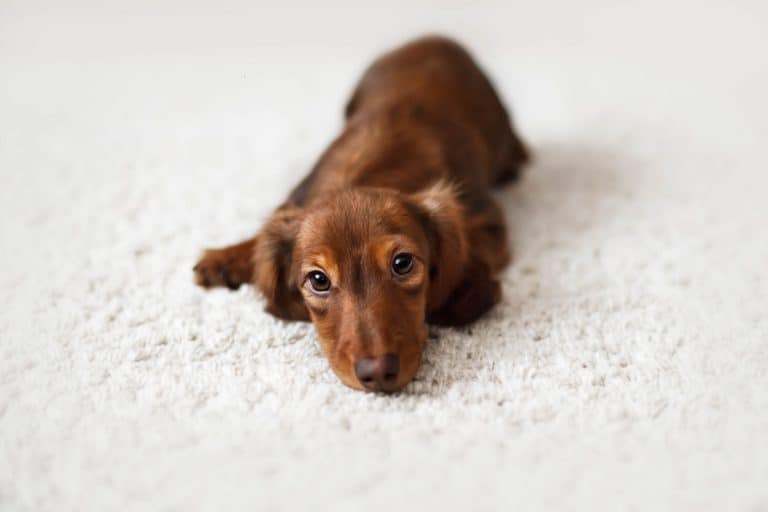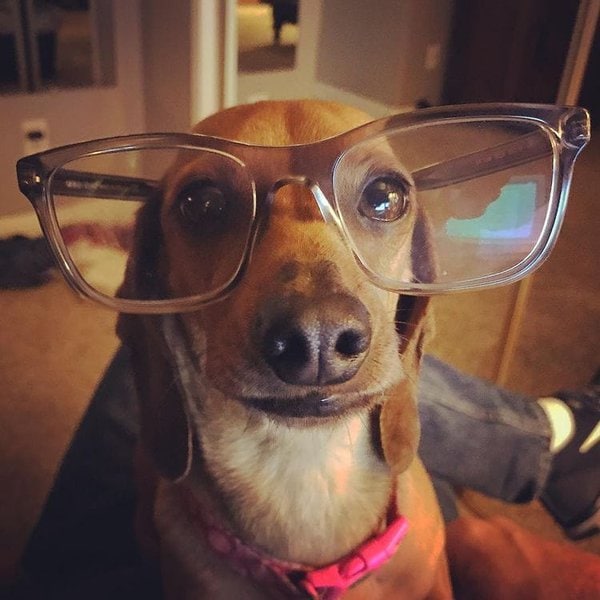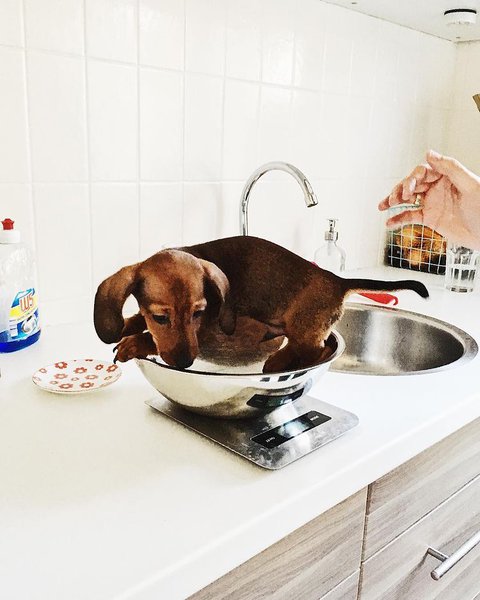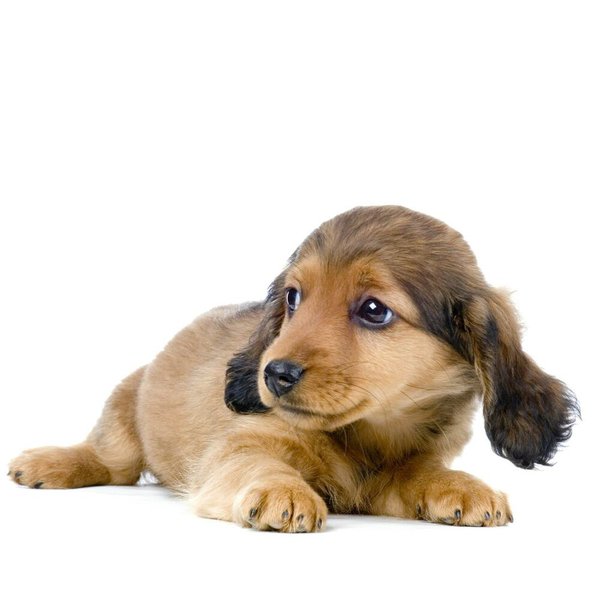We are smack in the middle of the designer doggie era and they just keep getting cuter and cuter. I recently came across what has to be one of the most endearing mixes in terms of aesthetics and personality.
This is the dachsador and it thrives from getting the best of both worlds from two of the most popular purebred pooches.
However, it is not the most common mix out there so finding information on it was a little tricky. But you have come to the right place. Let’s take a quick look at what the dachshador is.
A dachsador is a mixed breed dog that is produced as a result of artificially breeding male dachshunds and female labrador retrievers. It is one of the most versatile mixes as it combines two vastly different dogs. The appearance depends on the stronger genes. As a result, you may end up with a short and elongated dachsador or one that is larger and more proportional one.
Whether you find a larger or a smaller doxidor, you are in for quite a treat with their friendly and fun-loving personalities. In the sections below, we will take a closer look at what makes these dogs so special and what to expect in terms of appearance, temperament, health issues, and care needs.
What Does A Dachshund Lab Mix Look Like?

When a lab mates with a dachshund, the resulting mixed breed is referred to as a dachsador or a doxidor.
One of the biggest challenges should you decide to have this mix specially bred is the fact that the appearance is super unpredictable.
Both the doxie and labrador are strong purebreds and their genes compete for dominance when mixed. It is therefore always up in the air what the pup will look like in terms of size, build, and coat traits.
Labradors are large dog breeds while dachshunds are considered small. When they are mixed, the result is more often than not a small to medium-sized dog. The average height in this case is about 15 inches. However, there are cases where the doxidor is notably larger than the dachshund side of the family with heights of up to 25 inches.
This mix almost always takes after the dachshund bloodline when it comes to the build. This means that the dachsador will have a disproportionately long torso and short and stubby legs.
Despite this trend, there are some dachshund labrador mixed dogs with more proportional and muscular bodies.
When it comes to the coat type, one of the most notable features of this mix is the density. This is despite the fact that it is a single coat. The fur itself is usually straight and may either be short or long and fine or coarse depending on the parents.
Finally, appearance in terms of color also depends on the parents with most having a black, brown, golden or red coat.
Temperament Of A Dachsador: More Labrador Or Dachshund
Labrador retrievers are among the most popular dogs on the planet and their temperament is easily the main reason for this. Fortunately, the dachsador takes mainly after this side of the family when it comes to personality traits. Some of the best you have to look forward to include:
Calm And Even-Tempered
They are perfect if you want a quiet and easy to handle doggy that knows how to take life easy. With this temperament, you do not have to deal with insistent barking or inconvenient public fits.
Social And Trusting
Dachsadors get their impressive and endearing ability to get along with everyone from the lab side of the family. This makes them ideal for families with children or if you have a lot of guests over.
Gentle
Despite being relatively larger than your average lapdog, dachshund labrador mixes are incredibly gentle whether it is with kids and other pets or even with their own toys.
Intelligent
The lab genes cancel out the stubbornness of the doxie which makes these dogs significantly smarter. This will definitely come in handy when it comes to training.

They do, however, also borrow a few traits from the doxie side of the family. In addition to shared aspects like agility, playfulness and being affectionate, here are some of the specific personality traits the doxidor gets from the weenie side:
Clingy
Doxidors love to be around the people they consider family. They always want to cuddle and like weenies will follow you anywhere they can just to feel bonded to you.
Confident
They are also very confident and courageous which could get them into some trouble if they are not properly socialized and trained.
How Big Will A Lab Dachshund Mix Get? Large, Small, Or In The Middle?
As earlier stated, the appearance of a dachsador is very unpredictable because of the completely different size groups and builds of the contributing bloodlines. It could be large and muscular like the lab side or small and long like the doxie parent.
However, for the most part they fall within the small to medium size category of dogs granted that the dachshund parent is of a standard size.
Dachsador weight ranges from 30 to 80 pounds when they are mature which is between 1 and 18 months. The weight is skewed more towards the lower end of the range if it takes more after the doxie. It is, however, still higher than most dachshunds will ever weigh with the breed ranging from 16 to 30 pounds.
If the doggy takes more after the labrador parent, its weight is higher on the range and may even be above 80 pounds. In this case, the dachsador is considered a large dog as it is close to the lab parent’s 55 to 70 pounds and above weight range.
Dachshadors are usually quite short even when they are muscular and heavy. This is mainly because the dachshund’s shorter legs are more likely to be passed on to the mixed breed doggy. As a result, many of them fall within the doxie height limit of 15 inches.
However, if the dachshund labrador mix takes more after the latter in appearance this often extends also to their height. It is therefore not unusual to find a doxidor measuring up to 25 inches or even more in height when mature.

What Are The Common Health Problems Of A Dachsador?
One of the main reasons why mixing breeds is sometimes a fantastic idea is the fact that it helps to breed out negative traits. This includes health issues that the parents may suffer.
With the dachsador, the same can be appreciated as the dog is significantly less sickly than both parents, especially the dachshund.
However, not all the bad genes get weeded out and so the lab doxie mix may suffer a few health issues. Here are some of the most common.
Obesity
This is common with both labs and dachshunds and their mixed breed puppies are at equally high risks of getting fat. It happens mainly as a result of overeating as these doggies are ravenous little beasts.
It could also be as a consequence of skeletal issues that affect mobility and by extension the amount of exercise the dog gets.
Blindness
The main cause here is a condition referred to as progressive retinal atrophy. This results in poor vision which eventually ends up being blindness.
The worst part is that this genetic condition affects both eyes at the same time resulting in complete loss of vision.
Skeletal Issues
These are mainly from the doxie side of the family and appear if the dachsador takes on a short build.
The problems range from hip dysplasia to intervertebral disc disorder. In addition to being painful for the doggy, they hinder adequate mobility and may even result in paralysis.
Zesty Paws Hip & Joint Mobility Broth Booster is a chicken-based broth with supplements ideal for dealing with these bone and joint issues. It contains compounds like Glucosamine HCl, Chondroitin Sulfate & MSM as well as collagen for a healthier and stronger skeletal system.
Despite these health problems, doxidors live pretty long lives and have an impressive lifespan of 12 to 14 years. All you have to do as the caretaker is to ensure that they are eating right, getting enough exercise and seeing the vet on a regular basis for routine checkups.
Dachsador Grooming Tips
Dachshund labrador mixes are considered light to moderate shedders. If they get their coat from the lab side, it is usually short and fine and therefore sheds less. This means you will have less responsibility when it comes to grooming. If, on the other hand, it takes after the doxie with long and straight or wiry fur, the shedding is more and so are the grooming needs.
Whatever the case, you will need to brush the dog’s hair on a regular basis. If you are working with short fur then once a week should be enough. However, if you are dealing with longer coats on the dachshund labrador retriever mix then you might have to do it 2 to 3 times a week.
This may seem like a lot of work but with the right tools it should be quick and efficient. The HappyDogz Professional Magic Pro Deshedding Tool is an example of a grooming tool that will make your life easier.
The best thing about this deshedding brush is that the 4 inch stainless steel blade is ideal for use on a variety of coat types whether you are dealing with thick and wiry or short and smooth options.
When it comes to washing the doggy, you can get away with doing it once every month or two. This helps conserve moisture and natural oils on their skin and fur. While washing, it is also important to get the ears cleaned and the nails trimmed for an optimally groomed dog.
Related Questions
How Much Does A Dachsador Cost? Dachsadors cost between $400 to $1500. This depends a lot on the breeders you choose to buy it from. Another reason for the wide range in potential initial cost is the differences in appearance. Smaller doxidors are typically more popular and therefore often more expensive than medium or larger mixes.
How Can I Tell What My Lab Is Mixed With? Without specific breeding documents, it is a bit tricky to narrow it down to the exact breed that your lab is mixed with. However, there are several clues that could help you narrow things down. When it comes to physical appearance, look for things like size, head and face shape, ears, the tail and the coat. The personality could also point to different breeds.
Do Dachsador Shed? Like their parents, dachshund labrador mixes do shed. They are considered light to moderate shedders. Those with long and fine hair tend to shed more and therefore require more grooming care. Whatever the coat type, regular brushing to deshed does a lot to minimize the amount of loose fur you have to deal with.





